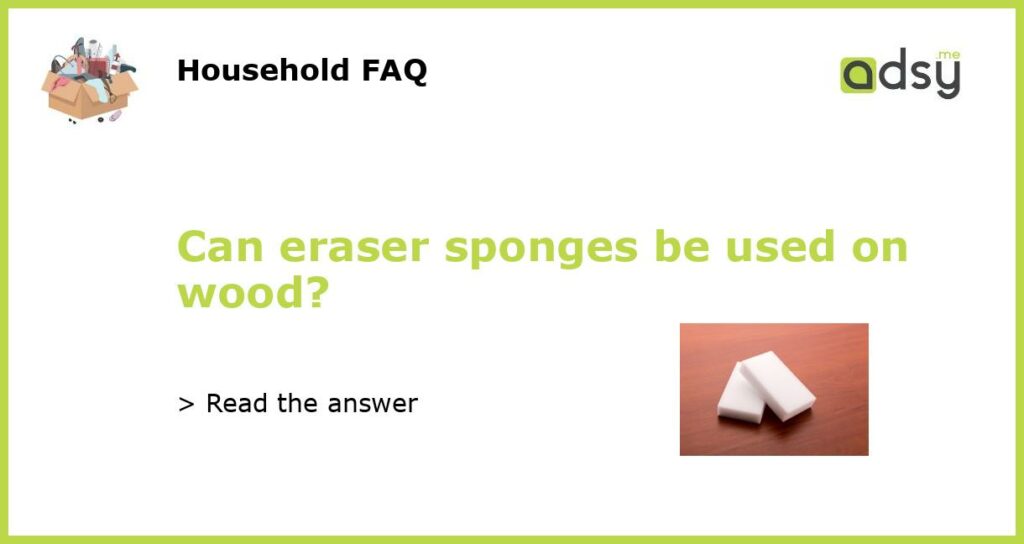Eraser Sponges: Can They be Used on Wood?
Eraser sponges have gained popularity in recent years as an effective cleaning tool for tackling tough stains and grime. But many people wonder, can eraser sponges be used on wood? The answer is, it depends on the type of wood surface and the degree of cleaning required.
What are Eraser Sponges?
Eraser sponges, also known as magic erasers, are made of melamine foam and can be used to clean various surfaces, including walls, floors, countertops, and appliances. When activated with water, they create a microscopic abrasive reaction that lifts dirt and grime off surfaces.
Using Eraser Sponges on Wood
When it comes to using eraser sponges on wood, caution is advised, particularly on delicate or untreated wood surfaces. The abrasive nature of eraser sponges can remove the wood’s natural oils and leave behind scratches and marks, making the situation worse than before.
If you’re planning to use eraser sponges on wood, it’s best to test an inconspicuous area first. If there’s no visible damage or discoloration, you can proceed, but exercise caution and don’t apply too much pressure. Avoid using eraser sponges on painted or stained wood surfaces, as they may remove the finish.
Alternatives to Eraser Sponges for Wood Surfaces
If you’re not comfortable using eraser sponges on wood surfaces, there are several alternative cleaning methods to consider. These include using mild soap and water, vinegar and water, or a specialized wood cleaner or polish. Be sure to follow the manufacturer’s instructions carefully and test in an inconspicuous area first.
Eraser sponges can be a useful tool for cleaning a variety of surfaces, but when it comes to using them on wood, caution is advised. Always test in an inconspicuous area and avoid using too much pressure. If you’re not comfortable using eraser sponges on wood, there are several alternative cleaning methods to consider that are less abrasive and won’t damage the surface.






